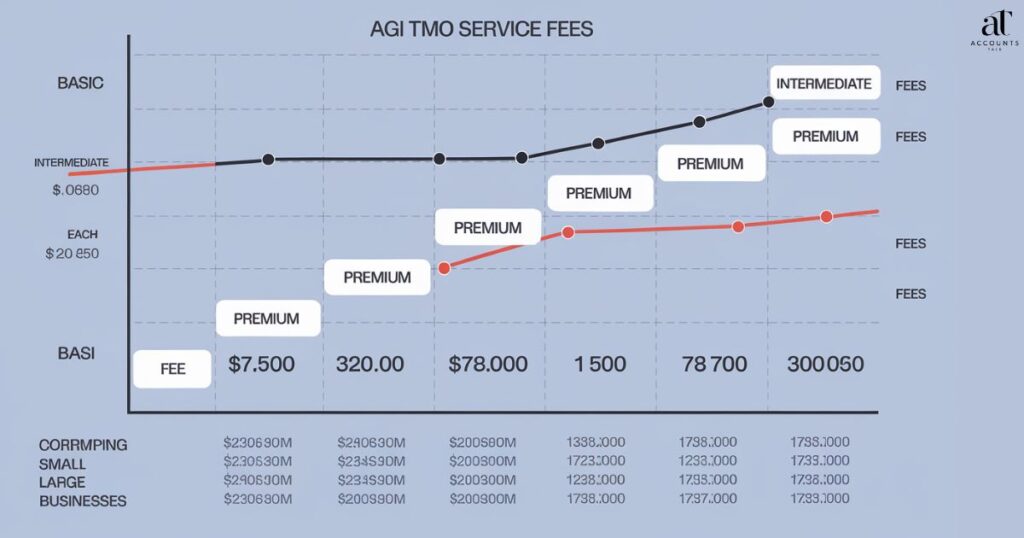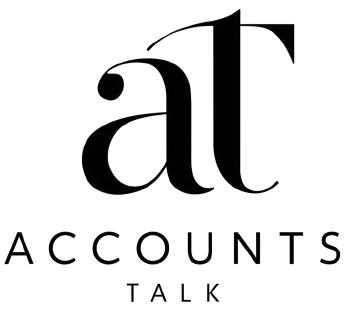Have you ever glanced at your bank statement and spotted a mysterious “AGI TMO Service Fees” charge? You’re not alone. Many Americans find themselves puzzled by these enigmatic entries on their monthly financial reports.
In this comprehensive guide, we’ll dive deep into the world of AGI TMO Service Fees, unraveling their purpose, origins, and impact on your wallet. Whether you’re a savvy saver or just trying to make sense of your finances, this article will equip you with the knowledge to navigate these charges like a pro.
What is the AGI TMO Service Fee?
AGI TMO Service Fees are charges that appear on bank statements, often catching account holders off guard. These fees are typically associated with various financial services and transactions provided by banks or other financial institutions.
The acronym “AGI” often stands for “Aggregate,” while “TMO” can represent different terms depending on the context, such as “Transaction Management Operations” or “Third-Party Money Operations.”
“Understanding AGI TMO Service Fees is crucial for maintaining a healthy financial lifestyle and avoiding unexpected charges,” says financial expert Jane Doe.
These fees can cover a range of services, including:
- Processing electronic transactions
- Maintaining account security
- Providing customer support
- Facilitating inter-bank transfers
It’s important to note that AGI TMO Service Fees are not universal across all banks. Some institutions may use different terminology or bundle these charges under broader categories.
- More Post: Unraveling the Mystery of VIOC Charges: Uncovering the Truth Behind Your Credit Card and Bank Statements
Why did The Charge Come Up On the Statement?
AGI TMO Service Fees typically appear on your statement due to specific account activities or as part of your banking agreement. Here are some common triggers:
- Exceeding transaction limits
- Using out-of-network ATMs
- Maintaining a balance below the required minimum
- Utilizing special banking services
Banks implement these charges to cover operational costs and maintain profitability. However, the transparency of these fees can vary significantly between institutions.
Types of AGI TMO Service Fees

AGI TMO Service Fees come in various forms, each tied to specific banking activities or account types. Let’s break down the most common categories:
- Monthly Maintenance Fees: Regular charges for keeping your account open and active.
- Transaction Fees: Costs associated with specific banking activities like wire transfers or excessive withdrawals.
- ATM Fees: Charges for using out-of-network cash machines.
- Foreign Transaction Fees: Applied when making purchases in foreign currencies.
- Overdraft Fees: Penalties for spending more than your account balance.
Understanding these categories can help you identify which fees apply to your banking habits and potentially find ways to reduce or avoid them.
How AGI TMO Service Fees Are Calculated

The calculation of AGI TMO Service Fees can seem like a black box to many consumers. However, banks typically use a combination of factors to determine these charges:
- Account Type: Different accounts (e.g., checking, savings, business) may have varying fee structures.
- Transaction Volume: Some fees are based on the number or value of transactions you make.
- Account Balance: Maintaining a minimum balance can sometimes waive certain fees.
- Customer Relationship: Long-standing customers or those with multiple accounts may receive preferential rates.
Here’s a simplified example of how a bank might structure its AGI TMO Service Fees:
| Account Type | Monthly Fee | Waiver Condition | Per-Transaction Fee |
| Basic Checking | $10 | $1,500 daily balance | $0.50 after 10 free |
| Premium Savings | $15 | $5,000 daily balance | $1.00 after 5 free |
| Business Account | $25 | $10,000 daily balance | $0.75 after 20 free |
It’s crucial to review your bank’s fee schedule to understand how these charges apply to your specific account.
Transparency and Disclosure
In the United States, banks are legally required to disclose their fees to customers. The Truth in Savings Act mandates that financial institutions provide clear and conspicuous information about account terms and fees. However, the way this information is presented can vary widely.
To stay informed about AGI TMO Service Fees:
- Read Your Account Agreement: This document outlines all potential charges.
- Check Monthly Statements: Regularly review your statements for new or unexpected fees.
- Use Online Banking Tools: Many banks offer fee calculators or alerts for potential charges.
- Ask Questions: Don’t hesitate to contact your bank for clarification on any fees you don’t understand.
AGI TMO Service Fees in Different Sectors
While we often associate these fees with traditional banking, similar charges exist across various industries. Let’s explore how AGI TMO Service Fees manifest in different sectors:
1. Finance and Banking
In the financial world, AGI TMO Service Fees are most prevalent. They can include:
- Wire transfer fees
- Currency conversion charges
- Loan origination fees
Case Study: Bank of America’s Advantage Plus Banking account charges a $12 monthly maintenance fee, which can be waived by maintaining a $1,500 minimum daily balance or receiving a qualifying direct deposit of $250 or more.
2. Telecommunications
Mobile phone and internet service providers often have their own versions of service fees:
- Activation fees
- Data overage charges
- Equipment rental fees
3. E-Commerce and Retail
Online shopping platforms and retailers may incorporate service fees into their pricing structures:
- Payment processing fees
- Convenience fees for certain payment methods
- Subscription fees for premium services
4. Subscription Services
Streaming platforms and software services often have complex fee structures:
- Platform access fees
- Content rental charges
- Add-on feature costs
5. Hospitality and Food Service
Hotels and restaurants may include service charges that function similarly to AGI TMO Service Fees:
- Resort fees
- Gratuity charges
- Booking fees
Understanding how these fees operate across different sectors can help you make more informed decisions as a consumer.
Managing AGI TMO Service Fees

Proactively managing these fees can save you significant money over time. Here are some strategies to minimize your exposure to AGI TMO Service Fees:
- Maintain Minimum Balances: Keep your account above the threshold that triggers fees.
- Use In-Network ATMs: Avoid charges for out-of-network cash withdrawals.
- Bundle Services: Some banks offer fee waivers for customers with multiple accounts.
- Opt for Electronic Statements: Many banks charge less for paperless options.
- Set Up Alerts: Use your bank’s notification system to avoid overdrafts and other fee-triggering events.
Remember, the key to managing these fees is staying informed and adjusting your banking habits accordingly.
Legal and Regulatory Considerations
The landscape of banking fees, including AGI TMO Service Fees, is subject to various regulations in the United States. Key legislation includes:
- Dodd-Frank Wall Street Reform and Consumer Protection Act: Enhances financial stability and consumer protection.
- Electronic Fund Transfer Act: Regulates electronic money transfers and related fees.
- Consumer Financial Protection Bureau (CFPB) Oversight: Monitors banking practices and enforces consumer protection laws.
These regulations aim to ensure fair practices and transparency in banking fees. However, it’s important to note that banks can still charge fees within the bounds of these regulations.
AGI TMO Service Fees vs. Other Fees
To put AGI TMO Service Fees into perspective, let’s compare them with other common banking charges:
| Fee Type | Average Cost | Frequency |
| AGI TMO Service Fee | $5-$25 | Monthly or per transaction |
| Overdraft Fee | $30-$35 | Per occurrence |
| ATM Fee (out-of-network) | $2-$3.50 | Per transaction |
| Monthly Maintenance Fee | $10-$15 | Monthly |
| Wire Transfer Fee | $15-$50 | Per transfer |
As you can see, AGI TMO Service Fees are generally lower than some other banking charges, but they can add up over time if not managed properly.
Conclusion
Understanding AGI TMO Service Fees is essential for anyone looking to maintain a healthy financial life. These charges, while often small individually, can significantly impact your bottom line over time. By staying informed, reviewing your statements regularly, and choosing banking products that align with your financial habits, you can minimize unnecessary fees and make the most of your money.
Remember, knowledge is power when it comes to personal finance. Don’t be afraid to ask questions, compare options, and advocate for yourself as a consumer. With the right approach, you can navigate the complex world of banking fees with confidence and keep more of your hard-earned money where it belongs – in your pocket.
FAQs
What is an AGI TMO service fee?
An AGI TMO service fee is a charge applied by banks for various account-related services and transactions. It can cover processing costs, account maintenance, and other operational expenses.
Why is my bank charging me a service charge?
Banks charge service fees to cover the costs of maintaining accounts and providing various banking services. These charges help offset expenses related to staffing, technology, and regulatory compliance.
What is the service fee on a bank statement?
A service fee on a bank statement is a charge for account-related services. It can include monthly maintenance fees, transaction fees, or charges for specific banking activities.
What are service fees charged by the bank?
Service fees charged by banks can include monthly account maintenance fees, ATM usage fees, overdraft charges, wire transfer fees, and other charges related to specific banking services or account activities.
More Post:

Mia Hazel is a finance expert and the author behind insightful content that simplifies complex financial concepts. With a passion for empowering readers to make informed financial decisions, Mia breaks down everything from budgeting to investments with clarity and precision.
Her work is dedicated to helping individuals navigate the financial world with confidence and achieve their financial goals. Follow her for practical tips and advice on all things finance.

